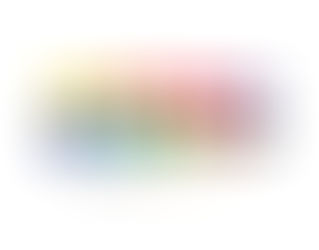Open ended vs Prescribed Art
- artisstudioal

- May 8, 2017
- 3 min read

Together with language, music and dance, the visual arts are one of the fundamental ways of expression for all societies, from the distant past until today. When an individual has a good foundation in art education , art making can be meaningful, pleasant and certainly satisfying at the personal level regardless of the age of the maker. Not only it creates knowledge of the external world, but also it helps to make sense of it while it voices-out one’s unique personal thoughts, emotions, feelings and ideas.
Generally speaking, there are two ways to teach "art" to a student: an open-ended art activity and prescribed activities.Prescribed art is the easiest avenue to standardization ; unfortunately, it is playing a big role in today’s educational activities , often to the expense of art itself . All too often and sadly, children are asked to engage in activities that trivialize artistic processes such as holidays decorations or other activities based on imitation. These do not offer any opportunities for significant learning but are instead activities designed to keep students busy.
What is the difference between both approaches? What can parents and educators do to offer the highly rewarding art experiences children crave for ?
Prescribed activities or “cookie-cutter art” are referred to those in which children are presented with a product they need to imitate. For example, when students are given a photocopied piece of paper with a printed pattern or motif. In that instance, these could be the teacher's instructions: color the flowers red, the leaves are green, the sky is light blue and the vase is brown. Or, worse, creativity's nemesis : "paint by numbers"... . Sadly, these silly activities are becoming more popular and parents are not often aware that such practices leave a very limited room for self expression, exploration and choices. Students are only following directions so their final product looks “beautiful” in the eyes of the teacher. Such activities create a sense of alienation and by the class' end, the room is left with a board full of identical paintings that not even students themselves would recognize as their own.

I’ll share some other characteristics of prescribed art activities so when you run into something like this with your students or children you are able to recognize them and run away!
Cookie-cutter activities are product oriented- this means they focus more on the final product than in the process itself.
Paint by numbers
The same patterns, examples, colors and step by step instructions are provided to all students.
A sample or print out is available.
There is a right and wrong way to proceed.
The children’s finished work all looks the same.
So let’s now talk about the real deal Open-ended art activities give children tools and room for exploration, trial and error, and ultimately problem solving abilities. Children love options, freedom to experiment with variety. For a young student, the process of creating a unique piece is more important than seeing the finished work. It’s in the process that the child is able to express him/herself, to construct ideas and piece experiences that represents them in their work. To "make art" enhances the mind's creative process which will permeate other children activities and will set the base for future endeavors. Art is one of the very few ways to let the children (and adults) explore the visual world, all the way from abstraction to representation to slowly construct a narrative. Open-end activities is the key to freedom from standardization. Each child is a self contained and unique universe, let's embrace, celebrate and respect that...
Characteristics of open ended activities:
Process focused.
No step by step instructions.
Student’s art is unique and original.
No right or wrong way to explore and create
So make sure that on your next art time with your children or students, you provide a range of quality materials, have several size brushes readily available, give them the option of different size paper or ask them to choose for themselves which mediums, and surfaces they would want to work with that day. If you have a child that is too overwhelmed by the wide arrange of options, start small by providing a couple of options and a few topics or subjects to explore. Make sure these topics are related to them, to their experiences and knowledge at that age or it might otherwise frustrate them and stall their creativity. if you have any questions or would like to further discuss this topic please shoot me an email or leave a comment!
















Comments